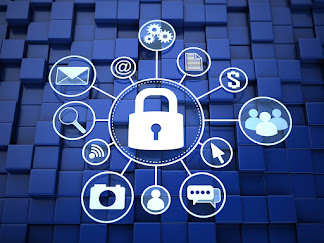What Is Michelangelo Virus and How to Remove It?
Back in the mid-1990s, viruses were similarly new yet no less threatening for computer clients. One such fearsome threat was the Michelangelo virus which surprised the computer security world at that point.
What Is the Michelangelo Virus?The Michelangelo virus was a type of boot area virus that was
intended to infect DOS-based frameworks, staying torpid until Walk 6, the birthday
of craftsman, Michelangelo.
The maker of the virus has never been revealed, yet it's
expected that they didn't mean on it being named after the celebrated
craftsman. Rather, examines saw the incident in its enactment date and chose to
name it Michelangelo because of the association.
How Accomplishes Michelangelo Work?
The Michelangelo infection was a slippery type of boot part
virus. It would stay lethargic and undetected on the boot division of a
computer until Walk 6. On that day, it would actuate before overwriting the
first hundred segments of one's hard drive in this way making it difficult to
recover any information from it.
Any floppy disk embedded into the framework simultaneously
would likewise be infected.
Subtly, if the computer wasn't utilized on Walk 6, the virus
would keep on staying lethargic until the next year.
How Would I Realize I Have the Michelangelo Virus?
Luckily, since 1997, no instances of the Michelangelo virus
have been accounted for. It's extraordinarily impossible that you have a
computer infected with it except if you happen to have an almost 30-year-old
computer that hasn't been turned on much from that point forward.
Nonetheless, if that was the situation, it'd be close to
difficult to discern whether you were infected without specific tools.
At that point, Norton had a free antivirus tool that would
identify if an infection was available or not.
How Could I Get the Michelangelo Virus?
Given the age of the Michelangelo virus, you more likely than
not haven't got it.
Before, it was transmitted by leaving infected floppy disks in
your PC. The minute you turn your computer on, the PC would endeavour to boot
off the floppy disk as opposed to your hard drive, in this manner infecting
your framework with the Michelangelo virus.
It likewise here and there went ahead merchant software disks,
calming you into speculation the substance would be sheltered as they were from
a respectable source. These incorporated a PC Paintbrush update disk from
Z-Delicate, and even Intel's Netspool software which was utilized for network
printers at that point.
How Would
I Dispose of the Michelangelo Virus?
In spite of the fact that you don't need to stress over
disposing of the Michelangelo virus today, it was somewhat of a panic in the
mid-1990s. That panic has especially blurred away at this point.
In any case, this is the ideal time to be reminded that you
should utilize internet security antivirus just as malware expulsion
applications at standard focuses. Other comparably dangerous viruses are out
there, and there's nothing to stop there being different threats that actuate
on specific days later.
Both antivirus
software and malware expulsion tools can take a few hours to scan your
computer, contingent upon the speed of your PC just as what number of files you
have. It merits requiring some investment, however, as it'll ensure you against
any threats.
It merits being familiar with realizing how to evacuate
viruses for Windows with and without antivirus software as well.
How Might I Abstain from Getting the Michelangelo Virus Once
more?
You can't be infected with the Michelangelo virus any longer,
yet that doesn't mean you're sheltered from all virus threats. There are a
couple of key manners by which you can bring down your odds of being infected
with any sort of virus. Here's a gander at a portion of the urgent manners by
which you can remain safe.
1. Keep
your antivirus software and malware insurance up to date: New
virus definitions are discharged day by day and these keep your PC educated on
what to search for with new virus and malware-based threats.
2. Be
Careful about New Programs: It's imperative to know the source of the
programs and applications you've downloaded. Less trustworthy destinations
group in additional items that you don't require including adware and malware.
3. Stick
to Notable Websites: You can be infected by perusing suspicious
websites that can download files and viruses. Be cautious on websites, for
example, torrenting locales.
4. Try
not to click on Banner Promotions: At the point when a pop-up
banner shows up when perusing a website, don't click on it. Regularly, it's
most secure to go to an unexpected website in comparison to remain on a webpage
that immerses you with pop-up adverts.




Comments
Post a Comment